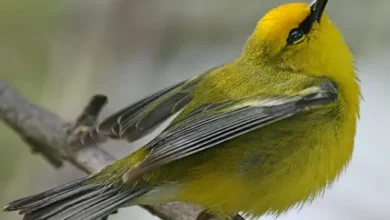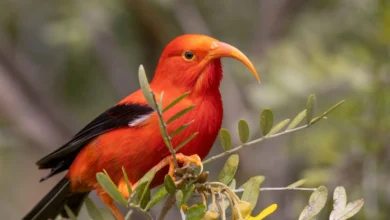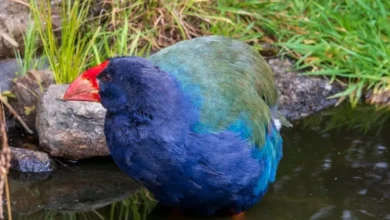Scioto Madtom: The Lost Catfish of Big Darby Creek
Extinction, Ecology & Legacy
1. Introduction
The Scioto Madtom (Noturus trautmani) was a diminutive catfish species once found exclusively in southern Ohio. Despite its fleeting presence—only 18 individuals ever documented—it continues to resonate as a tragic emblem of localized extinction and overlooked biodiversity.
2. Taxonomy & Physical Description
A member of the genus Noturus (family Ictaluridae), the Scioto Madtom belonged to North America’s most species-rich catfish group. Like its relatives, it possessed venomous fin spines whose sting was likened to that of a honey bee WikipediaU.OSU.
Descriptively, the fish measured roughly 1.4 to 2.4 inches (about 3.5–6 cm) in total length. Its body was gray to dusky olive-brown on top, with four distinct dark “saddles” along its back and a pale, cream-colored belly. The adipose fin was low and broadly fused to the caudal fin, with a slight notch dividing them. The pectoral spine bore 5–7 large rear teeth and smaller ones up front. The caudal (tail) fin had two dark bands—one central, another near the clear edge—while the anal fin typically featured 13–16 rays, often 14 U.OSUFlorida Museum.
3. Discovery & Geographic Range
Endemic to Ohio, the Scioto Madtom was found only in Big Darby Creek, a tributary of the Scioto River WikipediaU.S. Fish and Wildlife ServiceU.OSU.
The first specimens were discovered by ichthyologist Milton B. Trautman in November 1943. All 18 known individuals were collected in a single shallow riffle section of the creek, later dubbed “Trautman’s Riffle.” The final confirmed sighting occurred in 1957, after which no further evidence of its existence has surfaced Wikipediadarbycreekassociation.orgU.OSU.
4. Habitat & Behavior
Scioto Madtoms inhabited riffle habitats—shallow, fast-moving sections of streams with mixed sand and gravel, offering high oxygen and abundant invertebrate prey Florida MuseumFarm and Dairy.
Behaviorally, they were nocturnal bottom feeders. By day, they likely sheltered under rocks, aquatic vegetation, or even within crayfish burrows, emerging at night to feed using their sensory barbels—whisker-like organs—to detect prey Metro Parks – Central Ohio Park SystemU.OSUdarbycreekassociation.org.
A curious note: all known specimens were found between September and December, leading researchers like Trautman to speculate on whether the species migrated seasonally or remained hidden during warmer months Metro Parks – Central Ohio Park System.
5. Conservation Status & Extinction
In 1975, nearly two decades after its last sighting, the Scioto Madtom was listed as Endangered under the U.S. Endangered Species Act Metro Parks – Central Ohio Park SystemU.S. Fish and Wildlife Service. The listing offered habitat protection—an effort that helped stall proposed dam construction on Big Darby Creek, safeguarding the stream’s ecologically rich system Metro Parks – Central Ohio Park System.
Despite sustained search efforts, the species remained elusive. In September 2021, the U.S. Fish & Wildlife Service recommended its removal from the endangered list, citing extinction. By October 16, 2023, the delisting due to extinction was finalized Wikipedia+1ecos.fws.govcolumbusunderground.com.
Internationally, the IUCN officially listed the Scioto Madtom as Extinct (EX), noting its likely functional extinction since 1957 Wikipedia.
6. Ecological Significance & Human Impact
Tiny Sentinel of a Unique Ecosystem
As one of only a few organisms known from a specific riffle zone, the Scioto Madtom represented a unique ecological niche. This illustrates how specialized microhabitats can host highly localized—and vulnerable—species.
Pollution & Habitat Alteration
Though no direct cause of decline was confirmed, probable contributors include siltation, industrial discharge, and agricultural runoff—common threats to freshwater systems U.S. Fish and Wildlife Service.
Broader Ecological Context
Interesting comparisons reveal that other madtom species in Ohio, like the stonecat, brindled, tadpole, and speckled madtoms, are relatively common—and in some cases, stable or recovering. Only the mountain madtom (threatened) and northern madtom (endangered) currently face elevated risk Farm and DairyWikipedia+2Wikipedia+2.
However, the Scioto Madtom’s extinction stands out—its tiny population and extremely narrow range meant that even modest changes likely had catastrophic impact Farm and Dairy.
7. Legacy & Lessons for Conservation
Sentinel of Microhabitat Sensitivity
The Scioto Madtom reminds us that habitats we may overlook—like a small riffle—can harbor irreplaceable biodiversity. Conservation efforts must consider such niche ecosystems.
Value of Early Intervention
Delayed listing and limitations in ecological knowledge arguably hindered effective conservation. Rapid identification and swift protective measures are critical for rare species.
Importance of Watershed Stewardship
Efforts like the Big Darby Accord—a multi-million-dollar initiative to conserve the watershed—highlight the value of protecting whole systems to benefit both known and unknown species Farm and Dairy.
Power of Public Awareness
Though obscure, the story of the Scioto Madtom has potential to galvanize support for freshwater conservation—highlighting the “canary in the coal mine” nature of such vanishing species.
8. Conclusion
The Scioto Madtom—the smallest of Ohio’s catfish, and now lost forever—symbolizes the fragility of biodiversity when human impact collides with ecological specificity. Its story teaches us that conservation must extend beyond flagship species to protect even the smallest and most enigmatic inhabitants of our natural world.
May this tiny fish serve as a lasting reminder: hidden diversity matters, and once it’s gone, its secrets perish with it.




